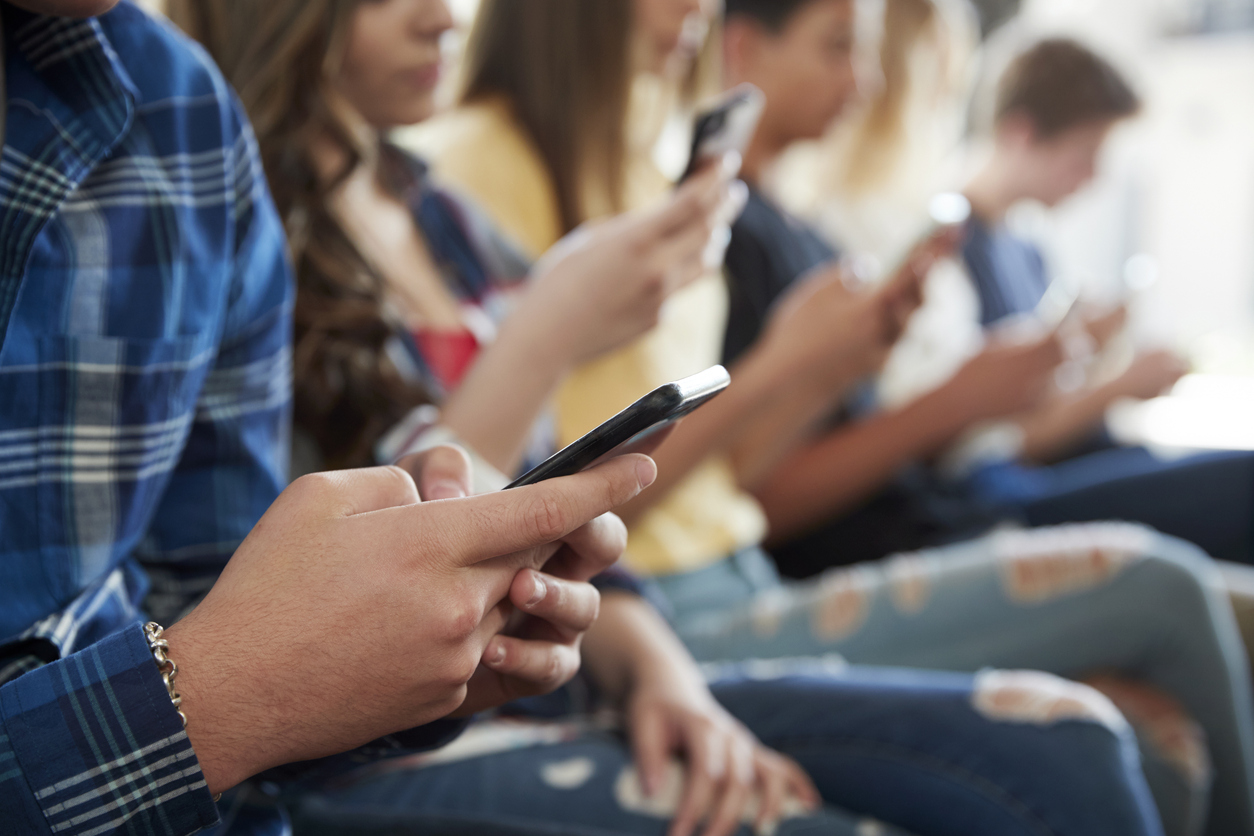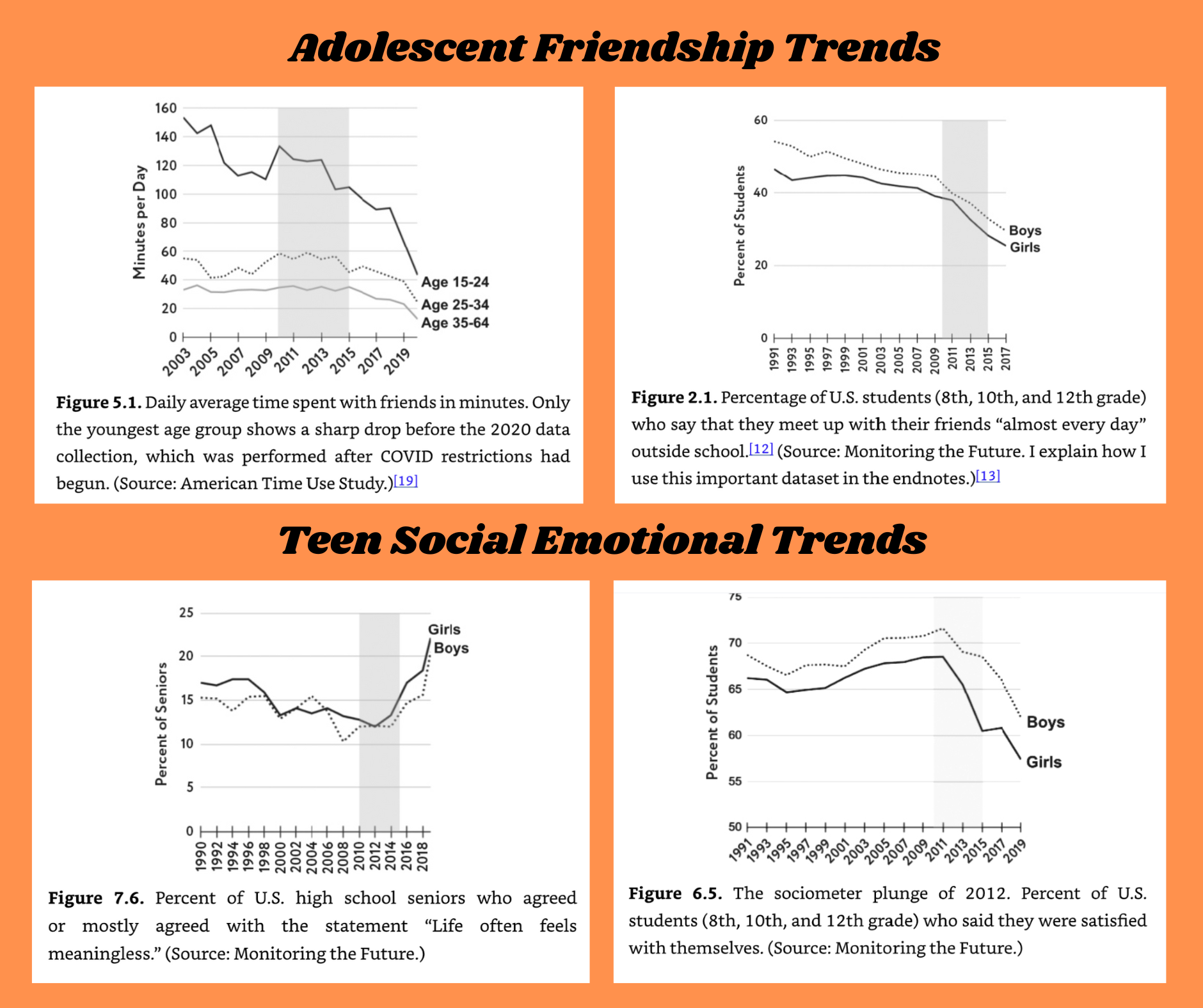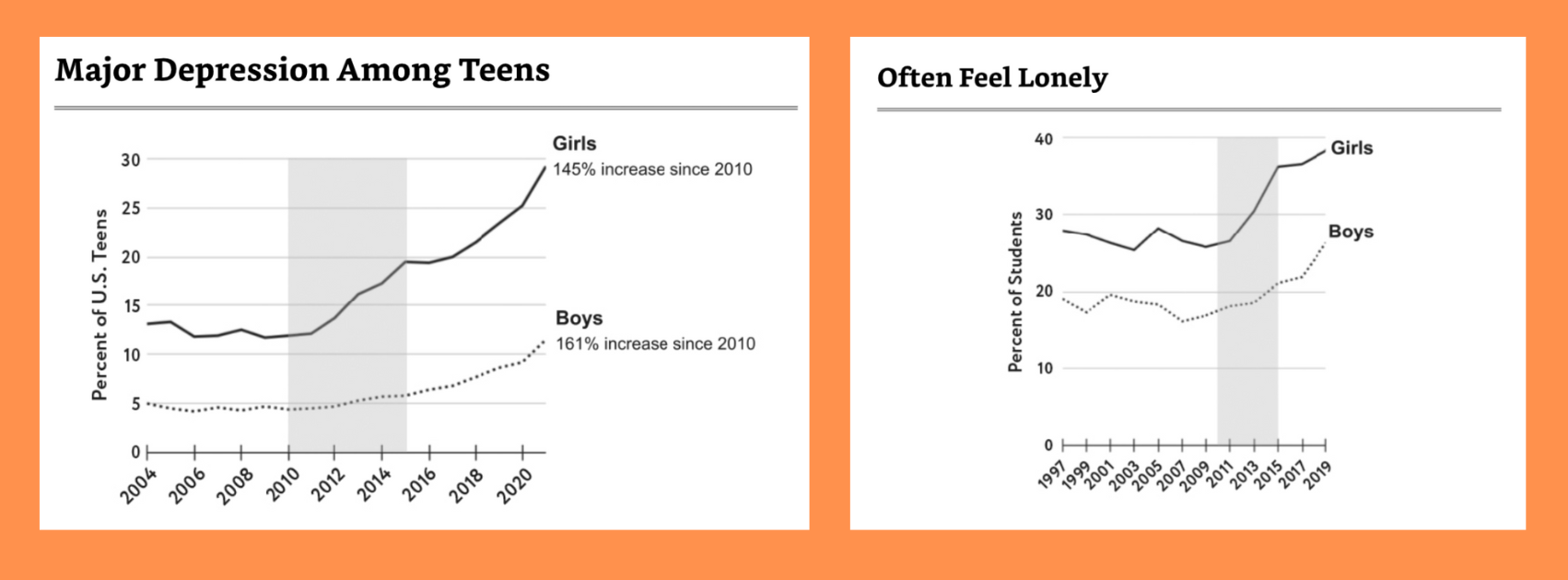
I’ve been a proponent of using digital technology in schools for decades. For me, this included allowing students to use cell phones, especially in districts where students did not have 1:1 computer options. Technology can be a way to engage students and extend their access to the world of ideas so that they can do a better job of weighing different points of view and developing their own critical thinking skills. However, recently the idea of allowing students to use cell phones in schools has come under attack. Some districts have banned phones; states are working on legislation that would extend these bans state-wide. On top of that, states are now suing social media companies like TikTok and Instagram, asserting that the use of social media can be damaging to teens and poses a health risk. What’s going on here?
Jonathan Haidt’s recent book The Anxious Generation provides background and research statistics to help us understand the problem. He offers a sobering analysis of how smartphones and social media are contributing to a rise in depression and anxiety among today’s youth, particularly teens and pre-teens. His main argument is that the widespread adoption of smartphones, particularly with the rise of social media platforms, has led to a mental health crisis that is hitting this generation harder than any before. With more young people glued to their phones, they are exposed to the pressures of constant comparison, cyberbullying, and the endless pursuit of validation through likes and comments. Haidt ultimately suggests a radical but simple solution: ban phones in schools entirely, not just in the classroom but all day, and give kids more opportunities for free play and risk-taking. He argues that these steps would foster healthier mental and emotional development and allow children to grow in confidence through unstructured social interaction.

Social Media’s Disproportionate Impact on Girls
In one of the most compelling chapters of the book, Haidt delves into why social media tends to harm girls more than boys. He backs this with alarming statistics: the rates of depression and anxiety have spiked significantly among teenage girls in the past decade. According to research Haidt highlights, girls are more likely to fall victim to the social comparison trap on platforms like Instagram, where the pressure to curate a perfect image is intense. Studies show that the more time girls spend on social media, the more likely they are to experience depressive symptoms. One study he cites from Jean Twenge found that, from 2010 to 2020, rates of severe depression in adolescent girls nearly doubled. The constant bombardment of idealized images and filtered lives leaves many girls feeling inadequate, which can erode their self-esteem over time.
Additionally, Haidt points to the prevalence of cyberbullying, which affects girls more than boys. Girls are more likely to engage in relational aggression—gossip, exclusion, and shaming—which translates more easily to social media. These interactions are particularly damaging because they can happen 24/7, with no escape once school hours are over. The emotional toll of being cyberbullied is linked to higher rates of anxiety, depression, and even self-harm among teenage girls.
What’s Happening to Boys?
While social media affects girls in specific ways, Haidt also examines the growing crisis of anxiety and depression in boys, though it manifests differently. Boys tend to be less drawn to the image-based culture of platforms like Instagram but may turn to gaming and other digital distractions, which come with their own challenges. In one study Haidt discusses, teenage boys who spend excessive time gaming or browsing the internet are more likely to struggle with feelings of isolation and anxiety. Though they are not subjected to the same relational aggression, boys are often caught in an endless loop of screen time that leaves them socially disconnected and emotionally stunted. Haidt notes that this over reliance on digital escapism may be contributing to the rise in mental health issues in boys, who are increasingly missing out on real-world interactions that help develop social and emotional skills.

What Schools Can Do
Haidt’s solutions for schools are direct and simple: more recess, no phones, and structured environments that allow kids to engage in free play and risk-taking. He points out that children need unstructured time to build resilience, take risks, and solve social problems on their own. This free play allows them to experience small failures, navigate conflicts, and build emotional resilience—all essential for healthy development. By banning phones, schools can create spaces where students are fully present, engaging with their peers without the distractions of the digital world. Haidt argues that informal time during the school day (recess, passing periods, and lunch) provides opportunities for kids to develop these social skills in a safe environment, which, in turn, helps reduce feelings of isolation and anxiety.
Personal Reflection: A Hopeful Path Forward
The Anxious Generation has changed the way I think about the open use of technology in schools. I still see the value of technology as a way to engage students with critical thinking and content development skills, but I’m thinking twice about the role that personal cell phones should play during the school day. Haidt offers a clear and compelling diagnosis of the crisis facing today’s youth, but he also provides hope. By reducing screen time, banning phones in schools, and creating more opportunities for free play, we can help children regain a sense of balance and confidence. Haidt’s work underscores the importance of creating environments where kids can be kids—free to take risks, make mistakes, and grow. By addressing these issues now, we have the power to help the next generation become more resilient, happy, and connected.
Seeking more resources to enhance your professional learning?
Sign up to receive our blog updates.
Dr. Aaron Willis is the Chief Learning Officer for Social Studies School Service. He works with districts around the country to provide resources, strategies, and training to help teachers make meaningful connections with their students. He can be reached via email at [email protected].